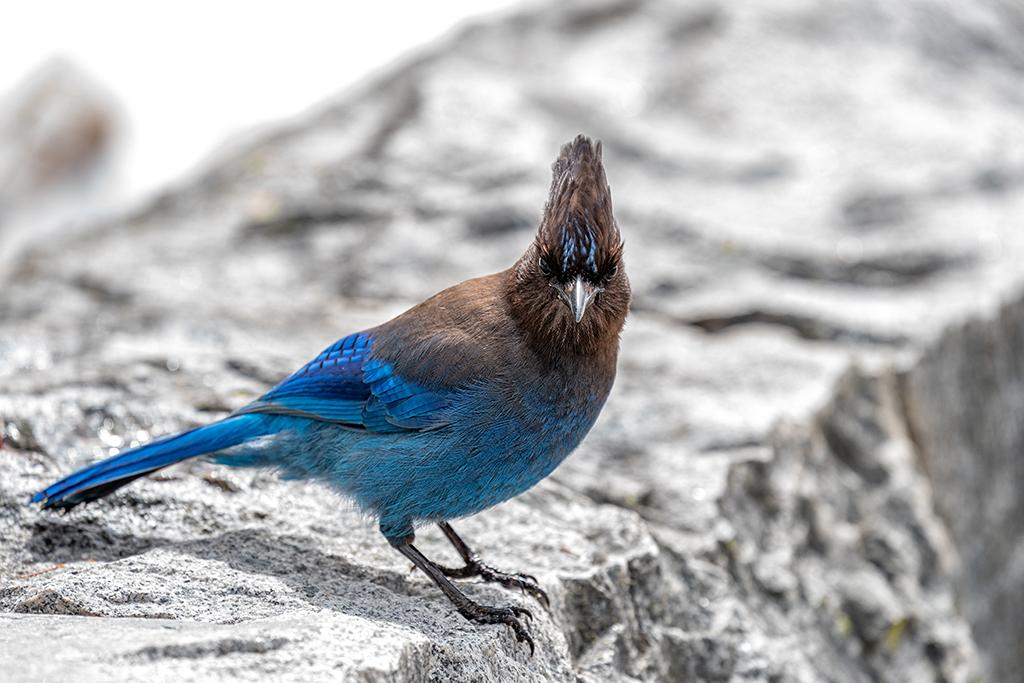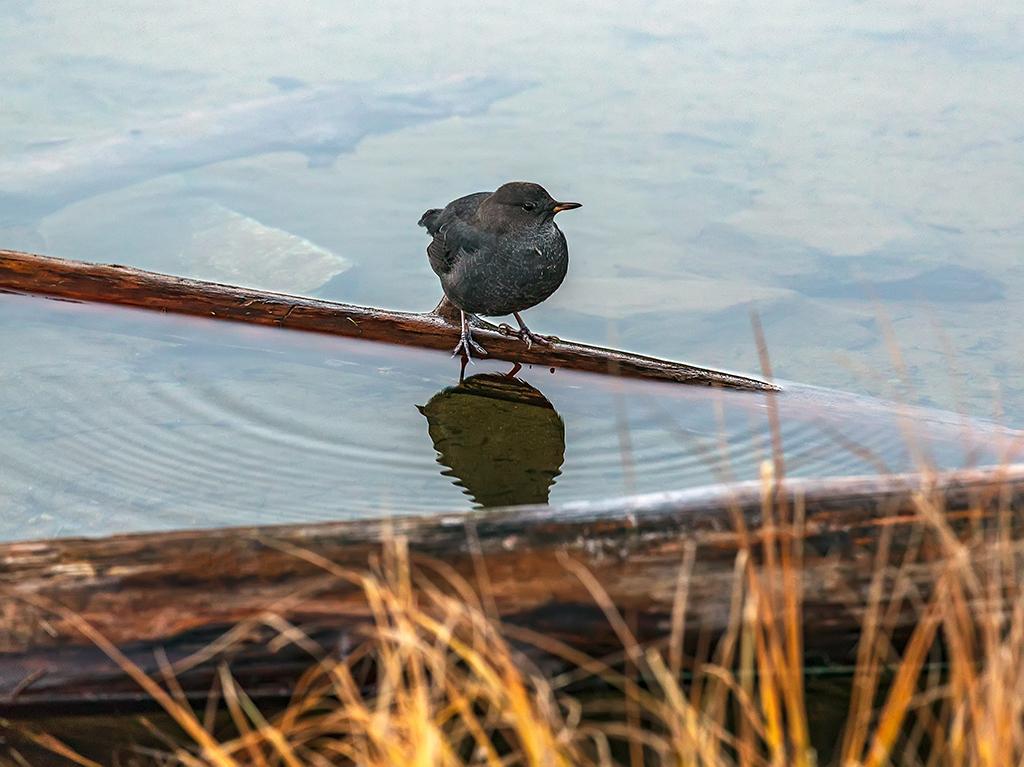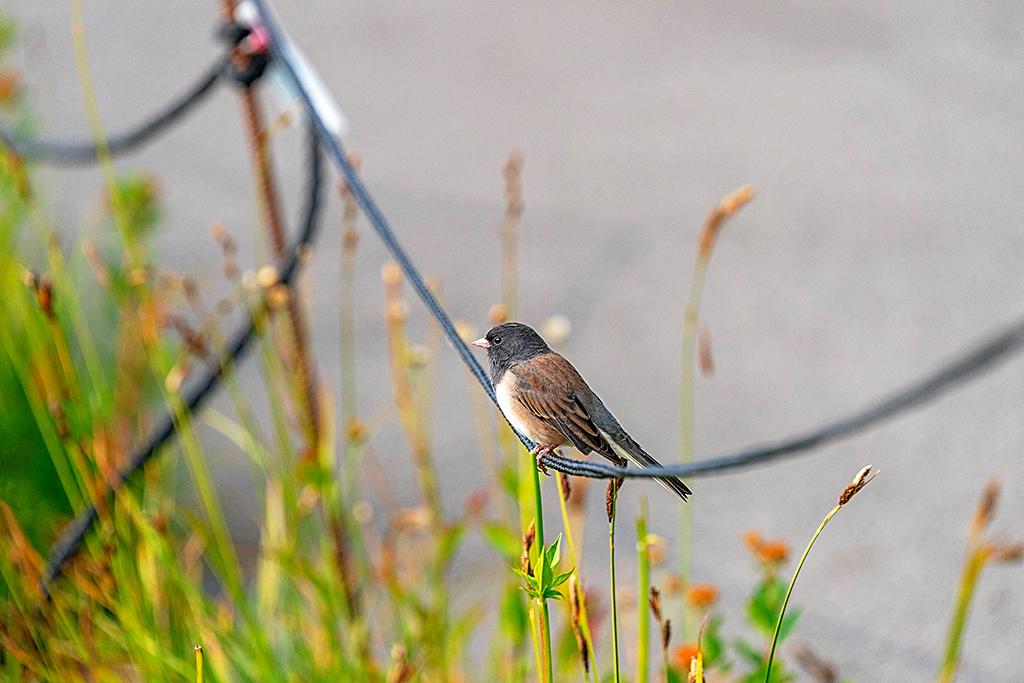An abundance of wildlife thrives within the three life zones (forest, subalpine, alpine) found at Mount Rainier National Park in Washington State. Look closely and you might see one or more of 65 mammal species, 14 amphibian species, 5 reptile reptiles, 182 bird species, and 14 species of native fish. Invertebrates probably represent 85 percent of the animal biomass in the park. Some of the more commonly-spotted animals you may see are black bears, elk, deer, chipmunks, ground squirrels, marmots, and mountain goats.
Often, the wildlife finds you before you find it. Serendipitous sightings might include a pretty little fox in a Paradise meadow, or a black bear chewing on tender spring grass in the Paradise overflow parking lot, or a hoary marmot munching on a bright yellow wildflower, or a teeny little chipmunk standing on a seed pod while nibbling on seeds, or a herd of mountain goats in the distance along the Fremont Lookout trail.

A pretty little fox up at Paradise, Mount Rainier National Park / Rebecca Latson

Black bears might even be spotted in the Paradise area overflow parking lot, Mount Rainier National Park / Rebecca Latson

A yellow flower for a marmot's breakfast, Mount Rainier National Park / Rebecca Latson

Balancing on a pea pod up at Paradise, Mount Rainier National Park / Rebecca Latson

Mountain goats in the meadow along the Fremont Lookout Trail, Mount Rainier National Park / Rebecca Latson
You’ll see plenty of birds in the park, from the bright blue Stellar’s jay standing on a rock wall at Reflection Lakes, to the curious little Canada jay not too far away from the Stellar’s jay, to the rain-soggy grouse chick strutting alongside you on a Paradise trail, to the water ouzel standing on a half-submerged tree branch, to the itty bitty dark-eyed junco performing a balancing act.

A stellar shot of a Steller's jay, Mount Rainier National Park / Rebecca Latson

A Canada jay blending in with the rock wall, Mount Rainier National Park / Rebecca Latson

A soggy little grouse chick strutting along the trail, Mount Rainier National Park / Rebecca Latson

Water ouzel in a pond near Tipsoo Lake, Mount Rainier National Park / Rebecca Latson

Dark-eyed junco and its high-wire balancing act, Mount Rainier National Park / Rebecca Latson
You might also be privy to a rare sight in the park: a fisher. No, not the human kind with rod and reel, but a housecat-sized member of the weasel family known for their skillful and ferocious hunting. Did you know, fishers are the only animal able to effectively predate porcupines.

A fisher release at Mount Rainier National Park / NPS - Kevin Bacher
According to park staff:
Historically a common species in Washington, fishers were over-trapped to extinction due to their highly valuable fur. Even after decades of absence from the ecosystem, fisher habitat and their prey base remains intact and abundant, making them exceptional candidates for a population restoration project. Washington is now actively restoring the fisher population by translocating fishers from healthy populations in British Columbia to the evergreen state’s landscape. In the first phase of this state-wide project, the Olympic Peninsula released 90 fishers to establish a population there. After its success, 81 fishers were translocated to the Southern Cascades and 85 fishers to the North Cascades.
To read more about the fishers, click here. If you are lucky enough to spot a fisher during your park forays, please contact the NPS to provide information on your observation.
Let’s not forget the amphibians living within the park – especially salamanders. The lower elevations of are filled with wet environments (rivers, streams, marshes and other wetlands) which make perfect habitats for seven species of salamanders: Cope’s giant salamander, coastal giant salamander, long-toed salamander, northwestern salamander, Van Dyke’s salamander, western red-backed salamander, and larch mountain salamander.

Western red-backed salamander, Mount Rainier National Park / NPS - S. Anderson
Salamander fun fact: the coastal giant salamander is large enough to eat mice, garter snakes and other salamanders. It is also the only salamander with a voice, able to emit a "yelp"-like call.
Ever heard of the banana slug? When you think of this particular member of the mollusk family, you probably think of the temperate rainforests of Olympic National Park. That’s not the only place they live, however. The lowland forest areas of Mount Rainier are perfect habitats for these invertebrates. You might even see one near the Grove of Patriarchs trail. Banana slugs can grow up to 12 inches (30.48 cm) and live up to seven years (one to three years is the average life span). And, banana slugs aren’t just yellow. They also come in shades of brown and earth tones to blend in perfectly with the landscape.
Banana slug fun fact: they are among the fastest slugs, moving at a rate of 6.5 inches (16.5 cm) per minute. Watch out, Road Runner!

A banana slug just inching along, minding its own business, Mount Rainier National Park / Rebecca Latson





